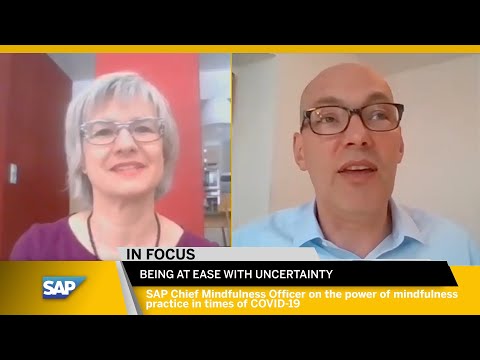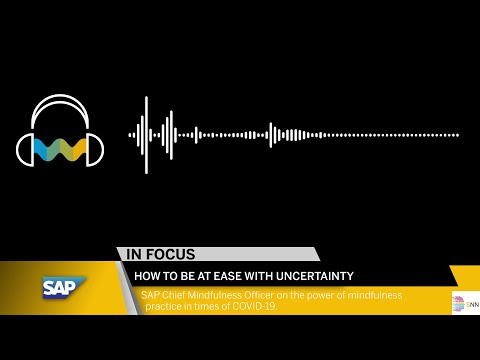Like many, I have been watching the novel coronavirus coming closer to my life. Colleagues or members of their families have tested positive. My younger son had to stay in the house for two weeks after coming back from a high-risk area. I have been working from home, confined with my family.
Like many, I have aging family members and friends I am worrying about. And yes, at times I wake up at night with thoughts of fear.
It is a completely normal reaction to feel insecure, worried, and frightened in this uncertain, dynamically changing situation. It is also normal to at times feel restless and angry, facing uncertainty about how long this crisis will last and what financial, social, and political consequences it will entail for society.
These perceived threats to our safety and viability trigger our amygdala, an almond-shaped structure in the center of our brain that stimulates emotional responses, including fear, anxiety, and aggression. The amygdala has been instrumental in our survival for the past 3 million years. But in times like these, it adds one more layer to the stress caused by current circumstances.

We have a choice in how we deal with difficult emotions, allowing us to calm down and become more resilient. For working from home, SAP Global Mindfulness Practice has developed an “ABC” technique to practice.
- A for Awareness and Acceptance: Become aware of any difficult emotion that is present in this very moment. Accept that it’s there and investigate how it expresses in your body. We can also name it – “This is anxiety” – which activates our prefrontal cortex that regulates the overreacting amygdala.
- B for Balance or Beginners Mind: Try not to judge whatever you are feeling. Try instead to investigate it with an attitude of openness and curiosity as if you encountered it for the first time.
- C for Compassion and Connection: Recognize that there is nothing wrong about your emotion and that actually a lot of people feel like you.
Finally, ask yourself, “What is needed in this situation right now?”
Fear isolates and disunites us. In some ways, this is also a side effect of the current measures against the spread of COVID-19: social distancing, quarantine, staying home.
The antidote to fear is the feeling of being supported and not alone, understanding that we are all facing the same challenge. I could be you and you could be me. Maybe this pandemic is a chance to realize how interconnected we all are, how the health and wellness of human beings everywhere impacts all of us. By exercising our minds and supporting our environment, we have a chance to influence the post-COVID-19 world.
Fear diminishes when we feel connected. By asking “How do I want to live in this moment? What is important to me right now? How can I be of service?” we can decide to reach out to others and to socialize – using video-conferencing tools to conduct online wine tastings, dinners, or even virtual parties, or by chatting with our neighbors from balcony to balcony. We can also engage in activities that help others; for example, doing errands for the elderly in the neighborhood.
Practicing compassion and mindfulness helps us connect to our inner reservoir of calm and clarity and find the courage to care of each other in these challenging times.
According to Luis Cozolino, professor of Psychology from Pepperdine University in California, “We are not the survival of the fittest, we are the survival of the nurtured.”
Bring a virtual mindfulness practice into your daily working routine in the home office:
- Before going crazy in front of your laptop because a colleague’s behavior makes you angry, try the three breaths micropractice.
- When you feel so stressed that you do not even taste the food you are eating, try mindful eating.
- To feel fully awake and connected before starting a virtual presentation, you can do the head, body, heart check-in.
There is one powerful resource that nurtures all of us: We can consciously observe and celebrate the good moments these days from a healthy distance – the warm rays of the spring sun caressing our faces, the cool refreshing air while we are walking outside, a bird singing from the top of a blossoming tree, the heartwarming smile another person gives us.
Whenever you live a good moment, take time for a very simple practice:
- In the first breath, focus on your breath, feel it in your body.
- In the second breath, ask yourself, “What I am grateful for right now?”
- In the third breath, take in the good and enjoy the pleasant feeling it evokes in your body.
Let’s practice together, because we are all in this together.
Listen to the full interview with Peter Bostelmann, chief mindfulness officer at SAP:

Listen to the podcast on Anchor or Spotify.



